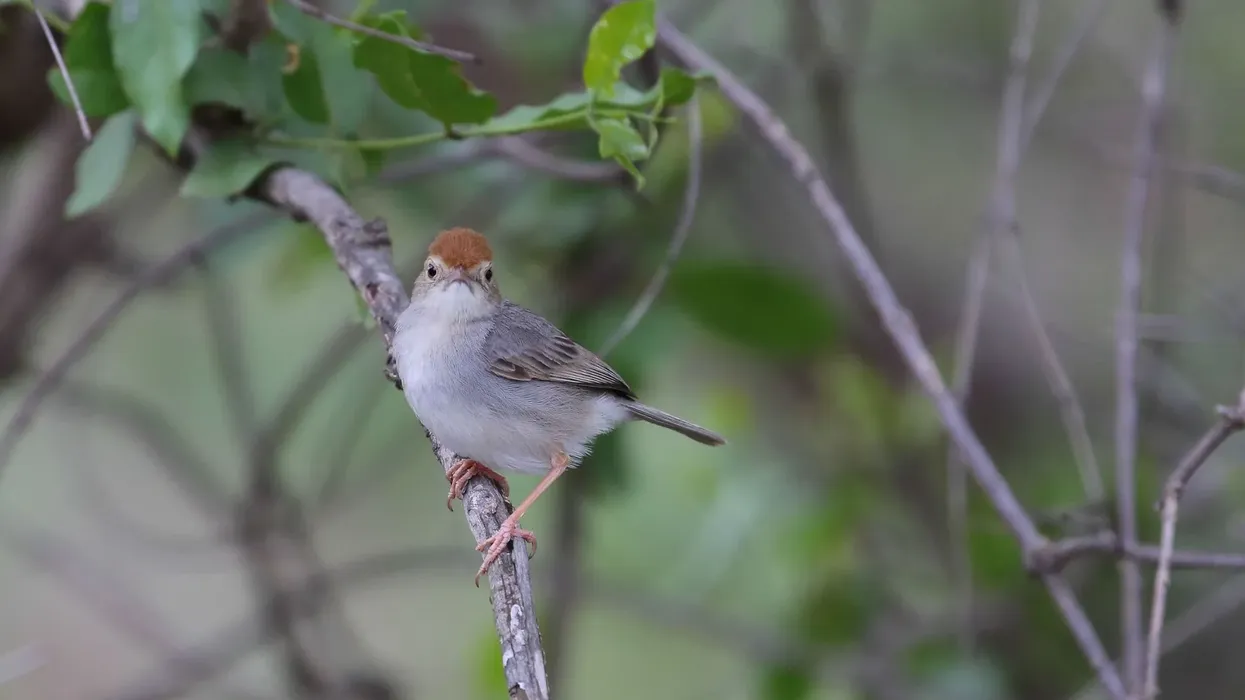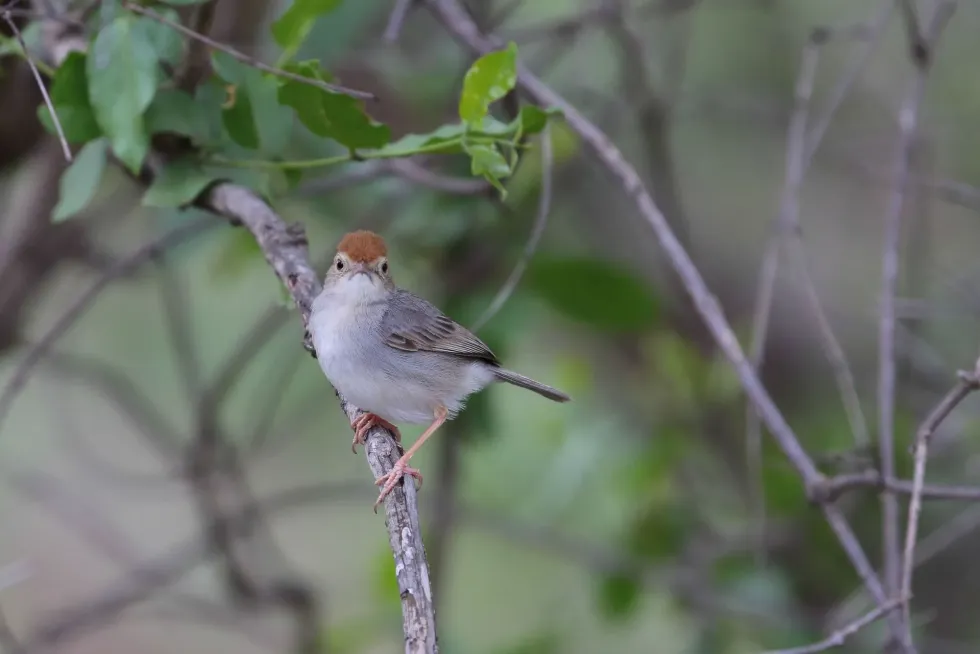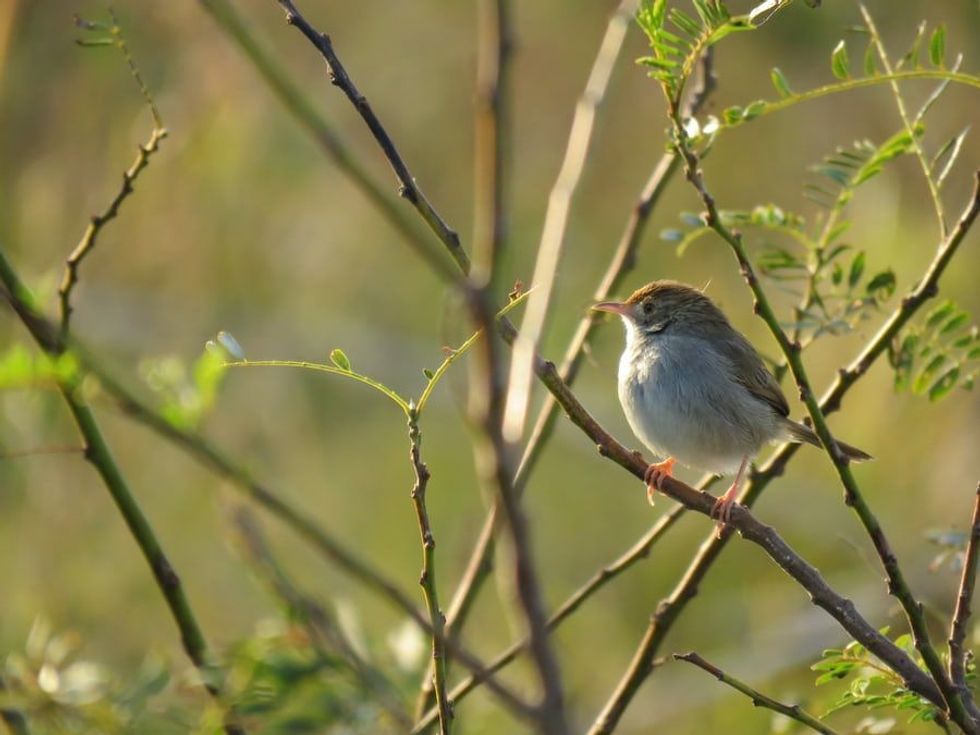The neddicky (piping cisticola) is an African bird belonging to the family of cisticolidae. As this is an African bird their local name neddicky is an Afrikaans name for the species. This brown cisticola is also considered as the resident endemic breeder in the southern part of Africa and other areas of it.
This cisticola is a common bird of open shrubland and woodlands which are rich in food for this species. Although they are also considered pretty usual for open plantations of exotic species, it avoids densely wooded habitats, but can even easily survive in compromising areas and seasons.
This common species is highly territorial and can be seen either alone or as a pair. The neddicky (cisticola fulvicapilla) is a very smart bird and they know how to get the best out of every situation.
This species of bird is highly versatile and can even survive the drier season.
They flourish all around the years, areas such as open woodland including south to the cape can also mean quite benefitting to them because of their diverse diet and adjustability according to the situation. To learn more about incredible creatures make sure to check out our articles on the Scottish crossbill and cock-of-the-rock.
Neddicky Interesting Facts
What type of animal is a neddicky?
The neddicky (piping cisticola) is a type of bird and they thrive in southern Africa, areas such as Rwanda and Tanzania south are notable homes for this bird.
What class of animal does a neddicky belong to?
As all species of the birds belong to the aves class, this resident of South Africa belongs to the aves species too. These species of cisticola are present in hundreds of species and they belong to several different families. It's often quite difficult to identify one such bird as they do not have any distinctive features.
How many neddicky are there in the world?
These birds are spread over a large range and often benefit because of their versatility. As most of the birds belonging to this species do not have any distinctive features, it's very hard for birdwatchers to gather enough information about them.
For the very same reasons, they are also given the tag of little brown jobs because this neddicky is a brown bird and vast diversity of birds that look like this species. Although this common species is present in abundance, the exact population count is gathered.
Where does a neddicky live?
There are around six species of neddicky (Cisticola fulvicapilla) and they are residents of South Africa. Their habitat range is diverse and even includes Gabon the democratic republic along with congo Rwanda and Tanzania. Regions that come in between Africa from Gabon are also suitable for this species.
What is a neddicky's habitat?
Southern parts of Africa are more preferred by these species. They are the largest species of warblers and can be found near light woodlands, shrublands, and temperate areas. This reddish crown bird also likes the temperate regions of southern Africa.
Who do neddicky live with?
This reddish cap bird with its local Afrikaans name for the species lives with several warblers. Other warblers found in their regions are its common neighbors. Birds such as Blackburnian warbler and yellow warbler can be considered their friends.
How long does a neddicky live?
Due to their survival skills in different environmental conditions and diverse diets, the neddicky (Cisticola fulvicapilla) lives for a good amount of time. Regions such as Rwanda and Tanzania, along with Gabon, serves as a good home for these species, making them live for seven to eight years.
How do they reproduce?
These species of birds time their mating season when they have food in abundance. Spring is the ideal season for breeding for these short-tail birds.
The nest is usually constructed from grass blades and is not constructed very high from the ground level. The female lays around two to five eggs and they stay in the nest for around a month.
What is their conservation status?
This animal's status is Least Concern.
Neddicky Fun Facts
What does a neddicky look like?
This species from Congo, Rwanda and Tanzania is a dull brown bird with a reddish cap that spreads till its neck. Their underparts are dark and have a darker tone on the breasts. These birds have a short and sharp bill, helping them pick insects.
The tail is very short and their legs are pinkish-brown. These birds have brown eyes and the younger birds are more yellow. However, in the southern part of Africa this neddicky, piping cisticola has grey underparts.

How cute are they?
This tiny little bird from Gabon the Democratic Republic, Rwanda and Tanzania, and South Africa is very adorable. Their greyish plumage makes them very cute and many people in South Africa, Rwanda and Tanzania (south) love this bird.
How do they communicate?
This neddicky (Cisticola fulvicapilla), from Congo, Rwanda and Tanzania (south) communicate through their distinctive calls. Their call can be often heard from a mile away, as these birds are very loud.
How big is a neddicky?
A neddicky (Cisticola fulvicapilla) is a very tiny warbler with a short tail spread out on a large range area throughout various grass and shrublands in Africa, like in Gabon the Democratic Republic. This short tail species of bird is almost similar in size to a black and white warbler and a little smaller than a chestnut-sided warbler.
How fast can a neddicky fly?
In their natural habitat, this neddicky (piping cisticola) can fly and move every fast, that's why it's often difficult for birdwatchers to gather enough physical features of this bird.
How much does a neddicky weigh?
This resident breeder of south Africa weighs around 0.3-0.4 oz (10-11 g).
What are the male and female names of the species?
There is not much difference in the male and females of this species, both are brown in color, can produce the same type of call, and even share similar colored underparts. Thus, both sexes are addressed with similar names.
What would you call a baby neddicky?
A baby neddicky (Cisticola fulvicapilla) has yellow underparts and is dull in color. One can call them nestlings or hatchlings.
What do they eat?
These birds have a diverse diet that helps them survive even drier seasons, their diets include termites, moths, and grasshoppers.
Are they dangerous?
No, they are not dangerous at all.
Would they make a good pet?
Yes, many warblers are considered good pets and this native of South Africa is no different.
Did you know...
Several species of warblers can co-exist together in the same area without any competition. As every species has its own different kind of insect food.
How many eggs do neddicky lay?
A neddicky (piping cisticola) lay around two to five eggs. The young are born naked and blind and are taken care of by their parents for two to three weeks.
How to tell females and males neddicky apart?
It can be difficult to tell apart or distinguish both sexes just by one look as they both appear brown. A great way to tell apart the male and female in this species is by understanding their behavioral traits.
The male can be seen perching on low trees or a big bush making repetitive calls for hours, they lack bold markings it's probably a male neddicky as the female neddicky (piping cisticola) do not sing for that long.
Here at Kidadl, we have carefully created lots of interesting family-friendly animal facts for everyone to discover! For more relatable content, check out these jacana facts page and umbrellabird facts page.
You can even occupy yourself at home by coloring in one of our free printable neddicky coloring pages.









